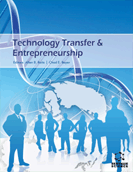Abstract
With the changing economic landscape of the 21st century, the role of universities as contributors to the knowledge economy is a topic of increasing national importance. In particular, a relatively new mode of university knowledge transfer – a process commonly known as technology transfer – has increasingly gained attention among the public, policy-makers, and university administrators in recent years. Unlike more mature modes of university knowledge transfer, such as instruction or publication, understanding of the technology transfer process and the appropriate metrics by which to measure technology transfer success are relatively nascent. Current standard and widely-used metrics intended to measure the effectiveness of the technology transfer process often fail to consider many important factors, especially discrepancies in input variables. Lack of critical evaluation may lead to inaccurate conclusions regarding process effectiveness and may even result in the implementation of policies detrimental to universities’ ability to contribute to the knowledge economy. This manuscript identifies a few key factors that play a role in determining the effectiveness of the technology transfer process at a given university and examines a case study involving Colorado State University, where changing some key input factors positively impacted technology transfer outcomes.
Keywords: Benchmarking, knowledge transfer, metrics, policy, research, technology transfer, university.
 28
28

